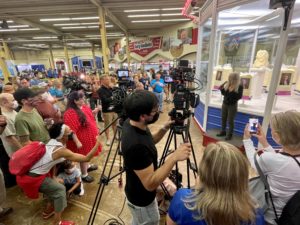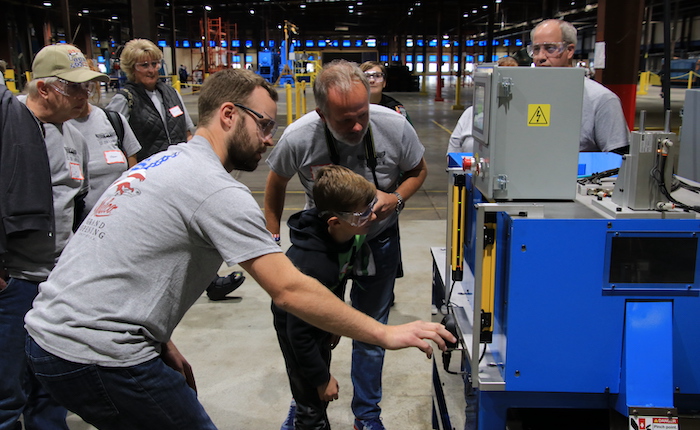We all intuitively know the power of a good story. It’s what makes us lean in at a party, binge just *one* more episode, or scroll a little deeper on someone’s social feed. As humans, we’re fascinated by other people’s lives and experiences, whether different or similar to our own. As marketers and communicators, there’s perhaps no other better tool in our belt than that of a good story – to catch people’s attention, influence behavior, change perception or drive a point home.
Think about how you make decisions. In the past week or so alone, I’ve asked a service provider for referrals, polled my Instagram friends for help in a decision, scoured reviews on a product and pulled the trigger on something that was advertised to me after watching a video featuring the founder’s personal story. All of this behavior comes from a place of wanting input and stories from other humans, not just a company, brand or fact sheet.
So how do we as representatives of those companies and brands wield the power of storytelling in our marketing efforts?
Stay clear on what you’re selling.
This may sound obvious, but we find it’s an exercise worth coming back to time and time again, as it can serve as a compass, pointing to the stories that ultimately matter to people.
Hospitality and tourism clients we work with aren’t just selling hotel packages; they’re selling memories, relaxation or wonder. Healthcare companies aren’t just selling technology or therapy or devices; they’re selling a breakthrough, a healthier future for someone or more accessible or affordable care.
By staying focused on what you’re really selling, you can more clearly identify those who embody these stories — whether customers, users, founders, staff or other stakeholders.
Consider where real people can move front and center for your brand or campaign.
Most of us have probably been told, “data tells, stories sell.” I’d argue that together stories and proof points create a homerun package for today’s savvy consumers. With our clients, we work hard to help them illustrate the information they want to share – pulling out the stories that will resonate with target audiences.
 We used this approach with our client, the Minnesota Firefighter Initiative (MnFIRE), in its fight to pass firefighter-health legislation known as the Hometown Heroes Assistance Program. Beyond just stats or generalities, we shared specific stories with media about firefighters – those who had lost their lives and the struggles they faced, and conversely those whose lives were spared because of the resources that MnFIRE champions, conveying the power and urgency of this issue. One of the most powerful stories we shared was from Jen Frantz, the widow of Rice Lake Township Volunteer Fire Department Chief Matt Frantz, who died of a heart attack at age 42. “I believe that if he were still here it would’ve been one of his top priorities to make sure his fellow firefighters were staying healthy, not only in body but in mind. And I know he would want to make sure that, for themselves and for their families and fellow firefighters, they had all the support they could get.”
We used this approach with our client, the Minnesota Firefighter Initiative (MnFIRE), in its fight to pass firefighter-health legislation known as the Hometown Heroes Assistance Program. Beyond just stats or generalities, we shared specific stories with media about firefighters – those who had lost their lives and the struggles they faced, and conversely those whose lives were spared because of the resources that MnFIRE champions, conveying the power and urgency of this issue. One of the most powerful stories we shared was from Jen Frantz, the widow of Rice Lake Township Volunteer Fire Department Chief Matt Frantz, who died of a heart attack at age 42. “I believe that if he were still here it would’ve been one of his top priorities to make sure his fellow firefighters were staying healthy, not only in body but in mind. And I know he would want to make sure that, for themselves and for their families and fellow firefighters, they had all the support they could get.”
We used a similar approach with health benefits provider Gravie. Rather than bullet points to boast Gravie’s exceptional customer service department and build trust with members, we sat down with Hannah, one of the account reps, to share her story on Gravie’s blog about what if felt like to be a 26-year-old coming off her parents’ health plan, confused and overwhelmed, and what now drives her passion in helping today’s health plan members navigate their plan.
Stories and spokespeople can come from almost anywhere.
Start telling!
Media crave a good story as much as your target audience and can be some of the best amplifiers of your stories.
When manufacturing client Malco purchased a defunct manufacturing plant in DeWitt, Nebraska, rather than focusing simply on the business expansion or the products, we told the stories of the people in town who had worked at the shuttered plant and were now headed back to work. One story in particular resonated with media: Gene Tyser, a larger-than-life character with a deep voice and a mustache that enters a room before he does, who spent 30 years working at the iconic VISE-GRIP tool factory in DeWitt, until it closed and moved operations to China in 2008. Despite the disappointment, Tyser remained a strong advocate of manufacturing in DeWitt: “I tell anyone who’ll listen—before I die, I want to see another tool come out of this factory in DeWitt, and I want to be buried with the first one that comes off the line,” he said. A decade later, he went back to work at the factory for Malco, bringing his expertise and passion to the team.

And when Linda Christensen, the longtime butter sculptor of Princess Kay of the Milky Way and her court at the Minnesota State Fair retired after 50 years, we saw it as an opportunity to share her story, knowing it would also help tell the story of dairy. The unique journey she’d been on resonated with media around the U.S., landing everywhere from CBS Sunday Morning to The Washington Post. In doing so, it opened the door to talk about how meaningful our client Midwest Dairy’s Princess Kay of the Milky Way program is to the dairy community, providing a platform for young dairy leaders to connect with consumers and help build trust.
Leading with a compelling story – and a gripping main character – opens the door to share the messages you ultimately want stakeholders to remember. Beyond use with the media, consider where you can lead with stories in your company blog, on social media, on your website, in email and direct marketing, and beyond.
Breaking through the barrage of information your audiences consume isn’t easy, but with the age-old art of storytelling, we can find opportunities to captivate, build trust and create meaningful and lasting engagements.

